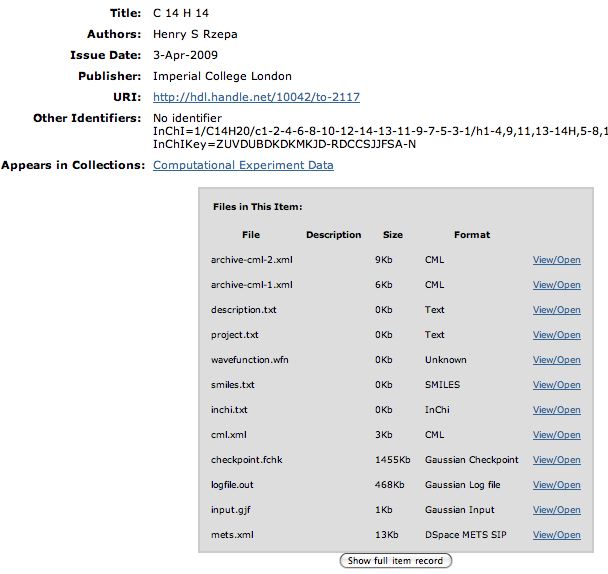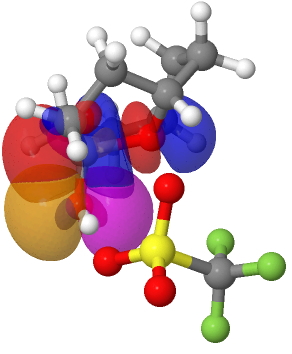
The diagram below summarizes an interesting result recently reported by Hanson and co-workers (DOI: 10.1021/jo800706y. At ~neutral pH, compound 13 hydrolyses with a half life of 21 minutes, whereas 14 takes 840 minutes.

The diagram below summarizes an interesting result recently reported by Hanson and co-workers (DOI: 10.1021/jo800706y. At ~neutral pH, compound 13 hydrolyses with a half life of 21 minutes, whereas 14 takes 840 minutes.

Understanding how molecules interact (bind) with each other when in close proximity is essential in all areas of chemistry. One specific example of this need is for the molecule shown below.

Every introductory course or text on aromatic electrophilic substitution contains an explanation along the lines of the resonance diagram shown below. With an o/p directing group such as NH2, it is argued that negative charge accumulates in those positions as a result of the resonance structures shown.
We recently developed a new computational chemistry practical laboratory here at Imperial College. I gave a talk about it at the recent ACS meeting in Salt Lake City. If you want to see the details of the lab, do go here. The talk itself contains further links and examples.

The preceeding blog entries contain stories about chemical behaviour.

The ionization of a C-X bond (X=halogen) to form what we call a carbocation and which is known as the SN-1 reaction goes way back in the history of chemistry. Julius Steglitz was probably the first person to suggest such an ionization, back in 1899 (Steglitz, J.; Am. Chem.

Click on diagram to see model. The reaction above is ostensibly a very simple pericyclic ring opening of a cyclopropyl carbocation to an allyl cation, preceeded by a preparatory step involving SN-1 solvolysis. As a 2-electron thermal process, the second step proceeds with disrotation of the terminii. Can this stereochemistry be illustrated with a computed model for the transition state for this process?

Mauksch and Tsogoeva have recently published an article illustrating how a thermal electrocyclic reaction can proceed with distoratory ring closure, whilst simultaneously also exhibiting 4n electron Möbius-aromatic character. Why is this remarkable? Because the simple Woodward-Hoffmann rules state that a disrotatory thermal electrocyclic reaction should proceed via a Hückel-aromatic 4n+2 electron transition state.

Click on the static image to get an active model.